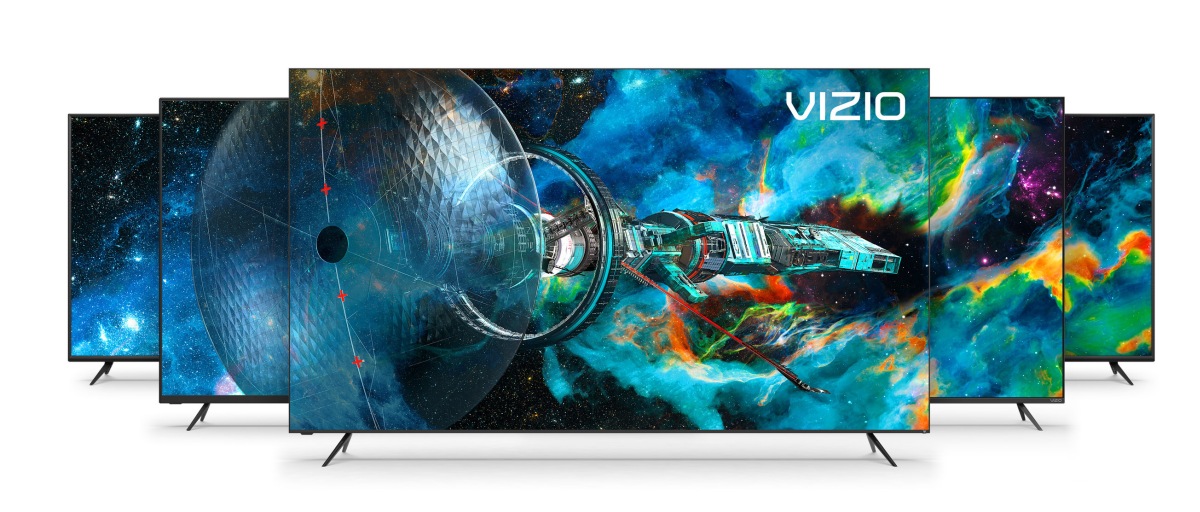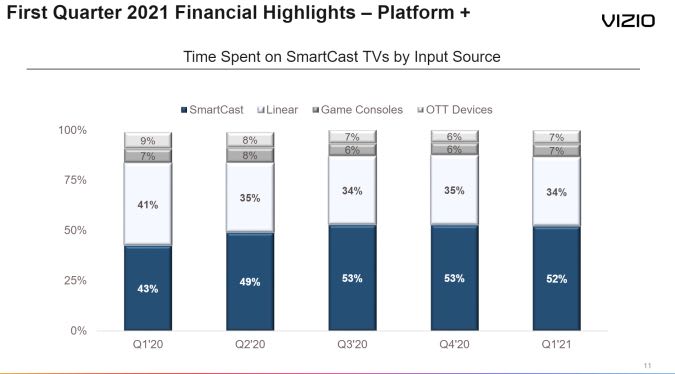
Vizio makes nearly as much money from ads and data as it does from TVs
[ad_1]
Vizio is finally a public company, after its 2015 plan for an IPO was derailed during a messy acquisition attempt from LeEco that eventually fell apart. Issuing its first public earnings report earlier today, the company revealed that in the first three months of 2021, profits from its Platform+ business — the part that sells viewer data and advertising space via the SmartCast platform — were $38.4 million.
As execs said on the call, the company continues to court relationships with brands and agencies, following the same plan laid out six years ago with a business built on its Inscape Automated Content Recognition tech.
Its device business (the part that sells TVs, sound bars and the like) had a gross profit of $48.2 million in the same period, up from $32.5 million last year. While the hardware business has significantly more revenue, profits from data and advertising spiked 152 percent from last year, and are quickly catching up.
Vizio did say that hardware profits were affected by products getting stuck at ports due to a shipping glut that has impacted many companies over the last year, buts forecast is that Platform+ revenue and profit will continue to grow in Q2, as device profit margins “trend toward the single digits.”

Vizio
The FTC slapped Vizio on the wrist for its Inscape efforts back in 2017, saying that data collection was done without properly informing viewers. Now the company’s products are a bit clearer about what you’re opting into, but also rely on many connected features like AirPlay and Cast that encourage people to use internet features, where it can track their usage and sell the data to advertisers.
Vizio said it now has 13.4 million active SmartCast accounts, with viewers spending 52 percent of their viewing time on SmartCast inputs (the built-in apps, or casting from another device). 34 percent of viewing time went to linear TV, with 7 percent for game consoles or over the top devices.
So what can we expect from Vizio going forward? More low-priced TVs with lots of connected features and the HDMI 2.1 support they already have. However, as profit margins on the TVs themselves narrow, Vizio is going to keep pushing connected features, as well as ad-supported streaming options (it just added several new free channels earlier this month) that give it more of an opportunity to make money with its Platform+ business.
If you have a Vizio TV and you’d like to opt out of the anonymized tracking, these are the steps to follow, and if you’d like to know more about how the data is collected and used, their privacy policy is available here.
All products recommended by Engadget are selected by our editorial team, independent of our parent company. Some of our stories include affiliate links. If you buy something through one of these links, we may earn an affiliate commission.
[ad_2]
Source link







